Jan 102000
The Embarcadero
Belt Railroad Engine House
Lombard, Sansome and the Embarcadero
According to the National Park Service: The State Belt Railroad of California was a shortline that served San Francisco’s waterfront until the 1990s and played an important role in World War II. Its tracks extended the length of the Embarcadero from south of Market Street to Fort Mason and the Presidio. The Belt transferred cargo between ships and main line railroads such as the Southern Pacific, Western Pacific and the Santa Fe. It also loaded trains onto car ferries for ports across the Bay. Although locals nicknamed the line the Toonerville Trolley and the Wooden Axle Line, the State Belt had an illustrious career. The first section of the State Belt was built by the Board of State Harbor Commissioners in 1890. In 1913, the State Belt built the Belt Line Engine House, a five-stall roundhouse at Sansome Street and the Embarcadero in San Francisco. This engine facility housed a modest number of oil-fired steam switchers, and later, ALCO S-2 diesels. An accessory building to the engine house, the sandhouse, was built the following year. Both buildings are simple utilitarian buildings of this period, constructed with reinforced concrete and plaster. The buildings were altered in the 1950s replacing five main doors with industrial type roll-up doors set back from the façade. Renovation work done in 1984 included replication of the original doors and reinstallation in their original location.
In 1914, the State Belt tracks were extended on a wooden trestle across a shallow stretch of the Bay known as Black Point Cove. There, at the end of Van Ness Avenue, a new railroad tunnel built by the Army took the track under Fort Mason to the dock area on the fort’s western edge. The Army’s railroad went on to the Presidio, and was used through World War II and beyond to transport supplies, and occasionally troops.
The State Belt contributed greatly to the movement of materials during the war. Army and Navy switchers were added to provide enough locomotive capacity. The State Belt also delivered trainloads of fresh troops to debarkation points, and picked up hospital trains and returning troops.The railroad moved 156 troop trains and 265 hospital trains in 1945 alone.
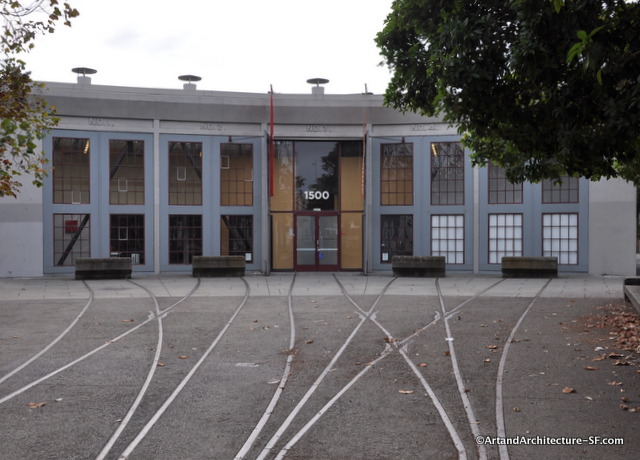
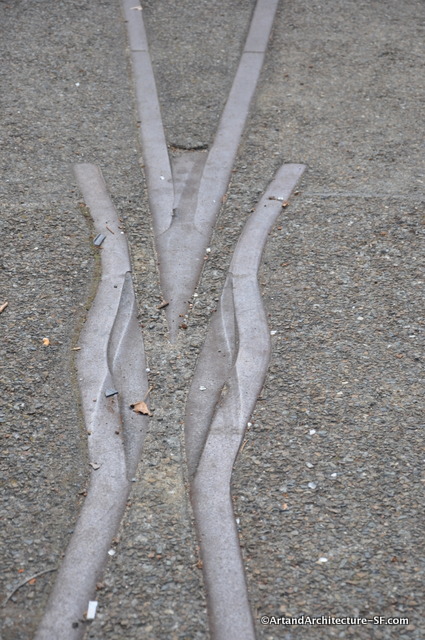
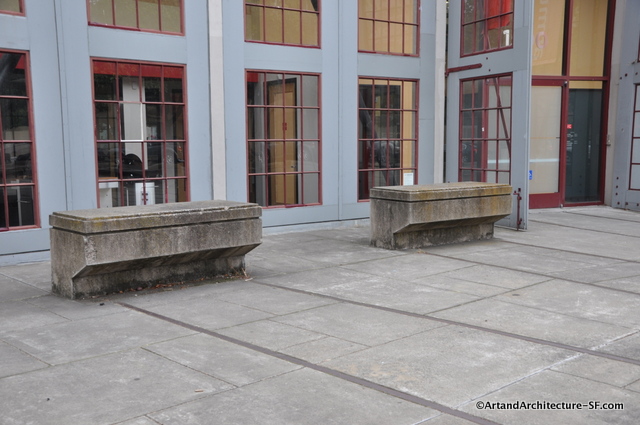
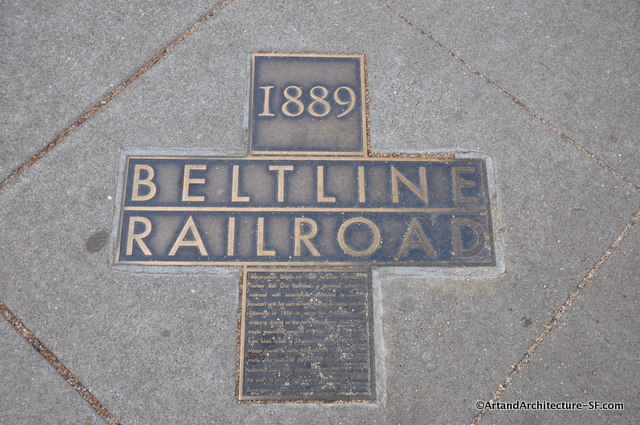
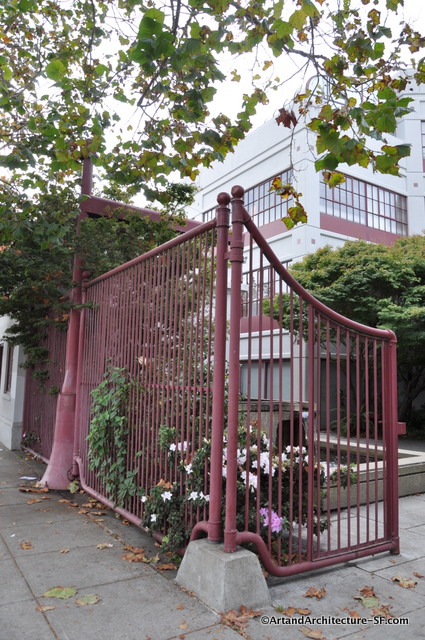
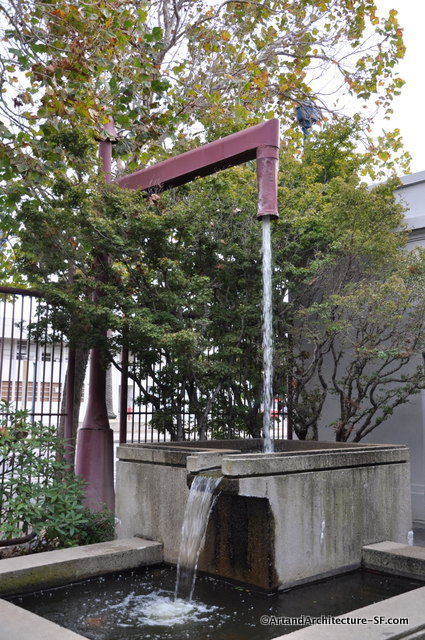
Another fascinating bit of history, thank you Principessa! When do you have time to do all this research? I love your last photo — wonderful composition!
I’ve been wondering how you find time to do all this too! I think traveling around the city taking photos must be so much fun!
What is the fencing made of? Love the red color for sure….
My grandsons would love this, a picture of a real engine house!! Love the lines in the second shot of the tracks!!
I love the second picture.
I never knew this place existed. I like how they incorporated the apparatus they used for the trains and made it into a fountain as seen in your last photo.